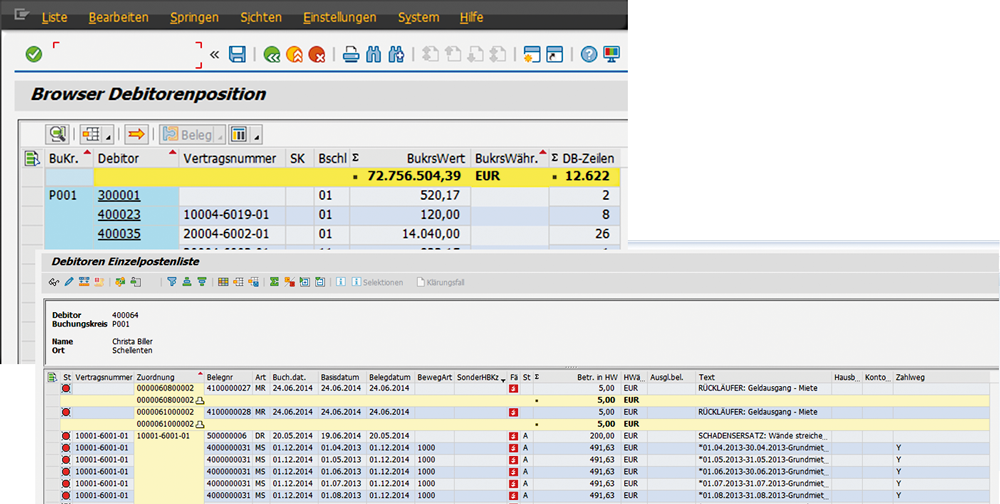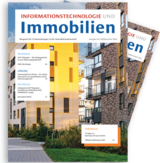Migration with major benefits – leaps in efficiency through implementing SAP S/4HANA®

Over the past seven years, HANA has evolved from an SAP® niche product to a cross-industry tool set. For around four years, HANA has been linked with the SAP® ERP systems, and accordingly now operates as an ERP product under the name SAP S/4HANA®. There are multiple reasons for focusing on the in-memory platform, which point to clear efficiency gains in business operations. If an extensive update is planned anyway, migrating to SAP S/4HANA® is certainly worth considering. If this measure is taken, users benefit simultaneously from being equipped with the latest version of the PROMOS.GT solution library and from compatibility guaranteed by SAP®.
The added value of HANA is a result of new forecast models due to more efficient data linking. As the processing is performed in the incorporated solution, transactional processing (OLTP) and analysis in the form of Business Warehouse queries (OLAP) are integrated. This allows real-time calculations to be prepared. Preconfigured business functions with calculation models, for interest or fee administration, for example, complete the solution. A new map function now also allows location-based applications, and relevant links to online map services are possible. Many transactions are processed using the Fiori applications from SAP®: Through connection to the ERP systems, these browser-based applications allow access to the central company data from mobile terminal devices.
Simplified table structures, compatible views
A crucial benefit of the database and SAP® Business Suite S/4HANA® is the lower data volume, which is primarily a result of removing the index tables and totals tables that previous applications had contained as well as the data compressions that are now used. The method chosen by SAP® to provide the previous tables as data views largely allows existing applications to be retained at the company without a primary need for adjustments. Of course, the same also applies to the PROMOS.GT solution library. New service modules can be integrated with ease based on the simplified table structures, and no interface problems arise.
Once the decision has been made to implement the HANA database or S/4HANA®, the migration criteria need to be defined depending on the company in question’s system requirements. Usually, these are better execution times, a gap-free process chain, the lowest possible and planned downtime as well as complete retention of all the previous data. Equally, the issue of data storage cannot be separated from the efficiency of the migration process. Accordingly, the first priority before the migration should be to clean the system of all outdated documents and data that is no longer required.
Three options for the migration process
Three different migration options are available for implementing HANA. A complete system upgrade would indirectly include S/4HANA®, but a new user interface and modified operation methods involve a corresponding amount of adjustment effort. This option is advisable if you are using SAP® for the first time. In the scope of a classic migration, the first step is to prepare the existing SAP® ERP, a Unicode update, if applicable, and, following this, the technical implementation of the HANA database followed by the upgrade to the S/4HANA® solution. Although the separation of the two steps means shorter downtimes, the workload is greater. As a third option, SAP has also established the Database Migration Option (DMO), which is the method PROMOS used. Here, the key steps are performed in the background using a Software Update Manager (SUM). The DMO is compatible with all versions from SAP® ERP 6.0 upwards.
This method involves access to a three-level system landscape, consisting of a development system, a quality assurance system and a live system. First, the existing database is exported to the development system (sandbox). The separation from the live system means that existing operational processes are not affected. The sandbox also serves as a playing field for various tests, error resolution and reprogramming and enhancing. Here, it is important to specify a binding catalogue of checks in advance.

Figure 1: The SAP HANA® database enables new, high-performance methods of reporting, including via the SAP® GUI. New interfaces are implemented on a browser-specific basis.

Figure 2: SAP Fiori® applications provide access to the data via a browser in a simplified interface.
The items listed here should include clear test run times so that the customer can be provided with a detailed schedule right at the start. Following the test phase, the quality assurance system is activated to check the corrections that have been made in simulated live operation. Only once smooth operation is possible at this stage can the go-live take place. At this point, downtime occurs for the first time while the existing data is transferred to the HANA database, which is then live. However, this can be done in one night, so that ongoing work processes in the system are again not affected.
System change advised, but not necessary
A migration involves extensive preparation, particularly with regard to checking the application data. If you do not first determine what data exists, including any that is no longer required, major business and legal complications can arise. The corresponding documentation for the audit must be implemented with extreme care, and thus takes a lot of tie. Having said that, thanks to the export function this documentation can be printed and used as a clear basis for comparison.
In conclusion, the migration to S/4HANA® can be viewed as a significant increase in efficiency. The user experiences thus far confirm the innovative character of the latest SAP product, above all the newly launched Fiori apps and the more efficient data selection, because this takes into account the reality in many companies that data and information are procured online and also accessed from mobile terminal devices more and more.
In the short term, it is not yet necessary to implement S/4HANA®: The users’ requirements for IT landscapes are still structured too differently depending on the company and, in the majority of cases, a maintenance commitment for the existing SAP® ERP solution is in place until 2025. In any event, preparation for an extensive upgrade to S/4HANA® should certainly take priority over individual update measures in order to keep the overall workload for conversion and, in particular, testing as low as possible for the customer.
redaktion@openpromos.de


